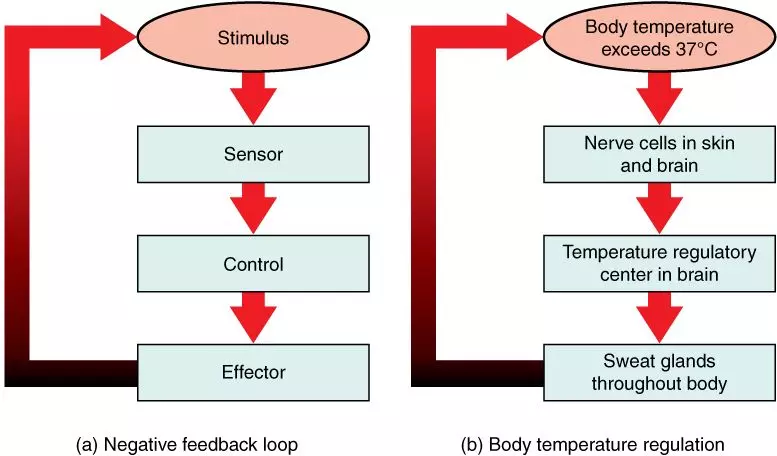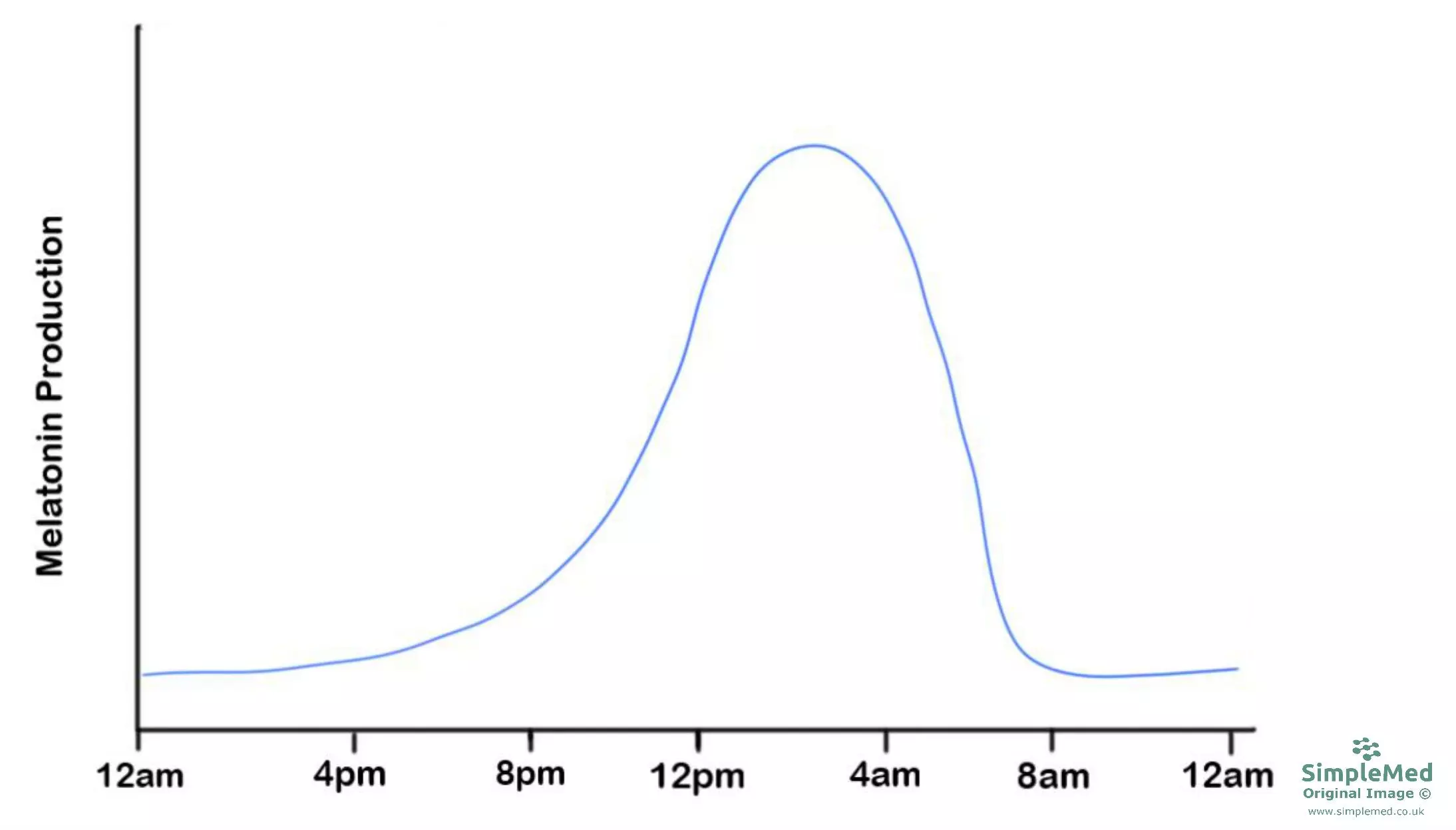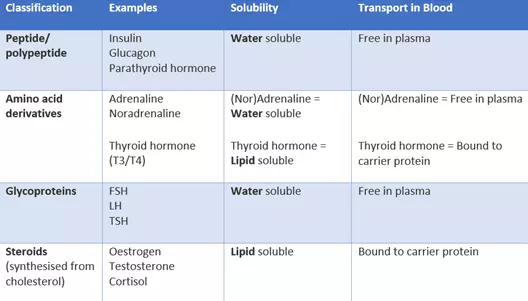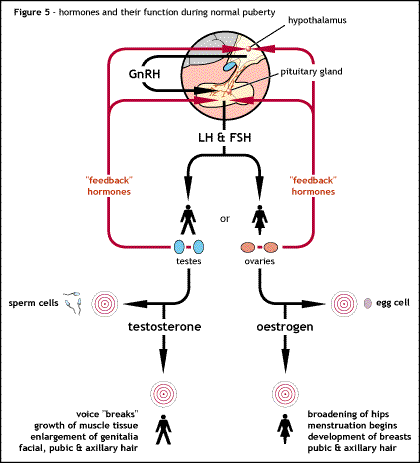Next Lesson - Control of Appetite
Abstract
- Homeostasis is the maintenance of a stable internal environment within a dynamic equilibrium via negative feedback mechanisms
- The endocrine system is an example of a control system, meaning it has the five key characteristics common to all control systems: communication, a control centre, receptors, effectors, and a feedback mechanism
- Negative feedback acts in order to bring a deviated norm back to the original set point, whereas positive feedback acts to deviate further away from the original set point
- Endocrine secretion is the release of a hormone into the bloodstream to act on a distant target cell
- Hormones can be classified according to their chemical structure
- Different hormones bind to different types of receptors to elicit a response in the target cell
Core
HomeostasisHomeostasis is the maintenance of a stable internal environment within a dynamic equilibrium via negative feedback mechanisms.
The endocrine system, together with the nervous system, are responsible for maintaining homeostasis. This is achieved via the following pathway:
- Stimulus – This is a change in the environment which causes the variable to deviate from its normal value.
- Receptors – These are specialised cells which detect stimuli. They communicate with the control centre via afferent pathways (nervous/endocrine). Examples include:
- Chemoreceptors – Detect chemical changes such as CO2, O2 and pH levels. (don’t forget full stops)
- Thermoreceptors – Detect changes in temperature.
- Proprioceptors – Detect changes in position and movement.
- Mechanoreceptors – Detect mechanical stimuli, such as pressure and stretch.
- Nociceptors – Detect potentially dangerous stimuli at the skin, such as extremes in temperature or pressure.
- Control centre –This is often located in the brain (within the hypothalamus or medulla oblongata), but also other areas of the body. The role of the control centre is to:
- Determine the set point – Core body temperature = 37oC
- Analyse the afferent input - Thermoreceptors detecting a rise in core body temperature
- Determine the appropriate response – Lower core body temperature
- Effectors – These are the organs/tissues which bring about the change to return the characteristic to the set point. They receive signals from the control centre via efferent pathways (nervous/endocrine).
- Feedback – The process by which the output influences the overall function of the control system.
- Negative feedback – This is the most common type of feedback loop. Here, the output acts to oppose the stimulus in order to bring the variable back towards the set point. This allows the variable to be kept within tight limits. For example, if the body is too hot, the effector will act to reduce the temperature and maintain homeostasis.
- Positive feedback – This type of feedback is much rarer. Here, the output amplifies the stimulus, causing the variable to deviate even further from the set point. One example of this is during labour, where a positive feedback loop acts to increase the strength of each uterine contraction.

Diagram: A negative feedback loop, using thermoregulation as an example
Creative commons source by OpenStax [CC BY-SA 4.0 (https://creativecommons.org/licenses/by-sa/4.0)]
The set point in a human can vary over time, which gives rise to biological rhythms. The human biological clock is found in the hypothalamus in the form of a small group of neurones collectively known as the suprachiasmatic nucleus. These neurones set the body’s circadian rhythm (around 24 hours). The biological clock receives input from environmental cues or zeitgeibers (light, temperature, physical activity etc.) and a hormone called melatonin, which is secreted by the pineal gland and forms the sleep-wake cycle in humans. A mismatch between environmental cues and the body clock (e.g. after a long-haul flight) results in jet lag.
Examples of biological rhythms include:
- Cortisol – Follows a circadian rhythm, peaking at 9am and troughing at midnight.
- The menstrual cycle – Involves a number of hormones (e.g. oestrogen, progesterone, FSH, LH), whose set points vary according to a monthly cycle.

Graph: The rise and fall of melatonin levels (maintained by the pineal gland) within the body based on the time of day - melatonin is the key chemical involved in the diurnal cycle (known as the biological clock). Melatonin is responsible for controlling levels of "wakefullness" and inducing a sleep state, with problems relating to melatonin production/control leading to common ailments such as insomnia
SimpleMed original by Thomas Burnell
A hormone is a molecule which is secreted by an endocrine gland into the bloodstream to act on a distant target cell. Hormones are normally present in the blood at very low concentrations (often in the picomolar to micromolar range). It is usually a change in the concentration of the hormone that produces a response in a target cell.
Hormones can be classified according their chemical structure:
 Table: Classification of hormones
Table: Classification of hormones
SimpleMed original by Joshua Brqy
The endocrine glands that produce the polypeptide hormones and catecholamines normally store their hormonal products within the cell in discrete storage vesicles prior to secretion. The steroid producing tissues do not normally store hormones, but store cholesterol as cholesterol esters. The thyroid gland is an exception to this rule, as its hormonal products are stored outside the cell as colloid.
The secretion of hormones is generally controlled by negative feedback, but in many cases the secretion of one hormone is controlled by another. In this arrangement, the second hormone is known as the tropic hormone (not to be confused with trophic hormone: a hormone that stimulates growth in the target tissue). Tropic hormones are mostly secreted by the anterior pituitary gland. One example of this is the hypothalamic pituitary gonadal axis, shown in the diagram below.

Diagram: Action of tropic hormones using the hypothalamic-pituitary-gonadal (HPG) axis as an example. GnRH is released from the hypothalamus, stimulating the anterior pituitary to release FSH and LH, which act on target cells within the ovaries/testes
Creative commons source by Neil Smith [CC BY-SA 4.0 (https://creativecommons.org/licenses/by-sa/4.0)]
Hormones exert their effects by binding to receptors on the target cell. The type of receptor depends on the type of hormone.
Lipophilic hormones (e.g. cortisol) bind to intracellular receptors located within the cytoplasm or nucleus. Due to their lipophilic nature, they can pass through the phospholipid bilayer of the cell. They exert their effects by modulating gene transcription.
Hydrophilic hormones bind to extracellular receptors. These include:
- G-protein coupled receptors – Hormone binding modulates the generation of a secondary messenger (e.g. cAMP), which activates various intracellular signalling pathways. Examples include glucagon and TSH receptors.
- Tyrosine kinase receptors – Hormone binding results in protein phosphorylation, which activates a signalling cascade and influences gene transcription. Examples include insulin and growth hormone receptors.
Inactivation of hormones occurs in the liver and kidney, and sometimes in the target tissues themselves. Steroid hormones are inactivated by a small change in chemical structure that increases their water solubility, enabling them to be excreted from the body in urine or via the bile. Protein hormones undergo more extensive chemical changes and are degraded to amino acids that are reused for protein synthesis.
Edited by: Joshua Bray and Dr. Maddie Swannack
- 12987

